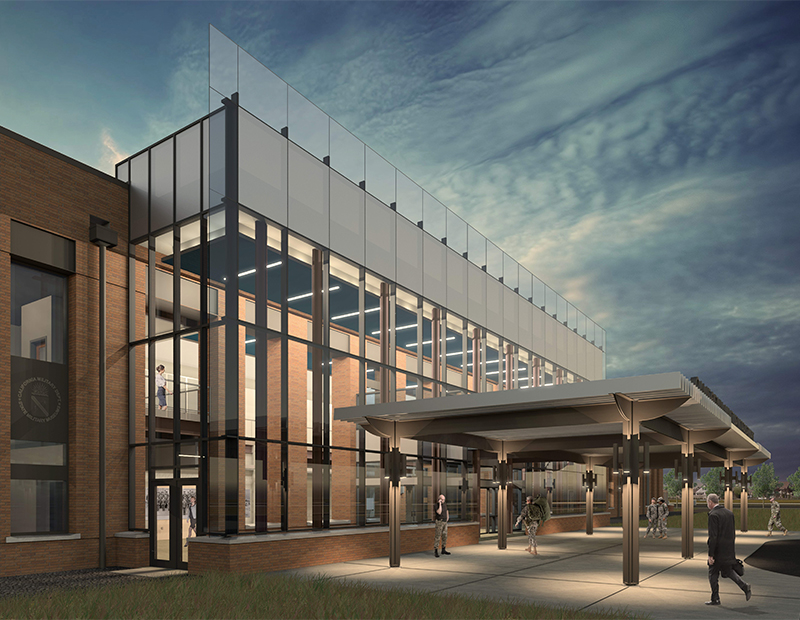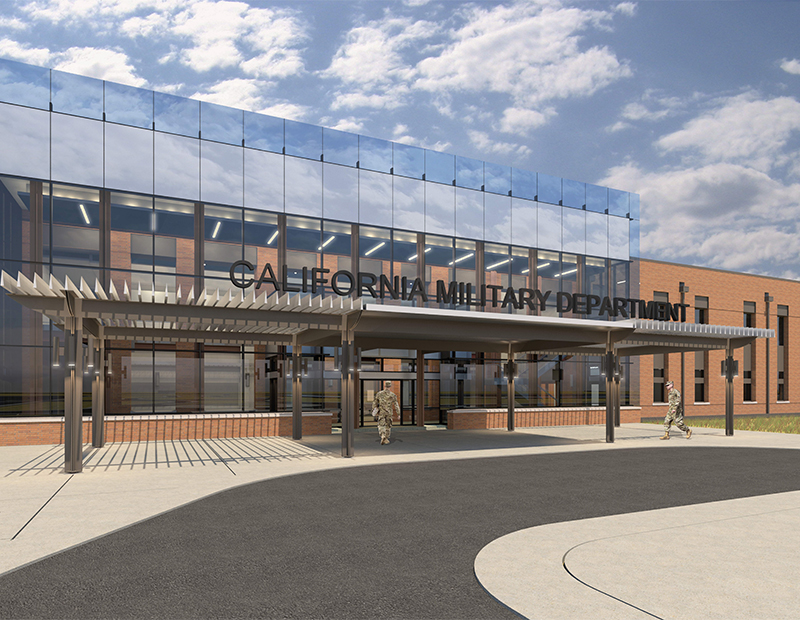California Military Department’s $135M HQ Breaks Ground
Walsh Construction Co. II and Stantec have teamed up to build the 285,000-square-foot, zero-net energy campus in Rancho Cordova, near Sacramento.
By Scott Baltic, Contributing Editor

Rendering of California Military Department’s Consolidated Headquarters Complex in Rancho Cordova, Calif.
A ceremonial groundbreaking was held for the California Military Department’s new $135 million Consolidated Headquarters Complex (CHQC) in Rancho Cordova, near Sacramento, Calif.
The 285,000-square-foot, multi-building campus will be home to all four of the CMD’s “four pillars”: the California Army National Guard, California Air National Guard, California State Military Reserve and California Youth and Community Programs.
(The California State Military Reserve has a headcount of nearly 1,300, according to a CMD spokesperson. About 20 states have such state guard or militia forces, which, unlike National Guard units, are wholly state controlled and cannot be federalized).
The design-build team of Walsh Construction Co. II and Stantec will develop the new CHQC, which is scheduled to open in 2020.
The complex will sit on a 31-acre site adjacent to Sacramento Mather Airport and will host a headquarters office building, a warehouse, an emergency operations center, a utilities building, a badging center and an access control point.
Security, understandably, will be significant. The compound will be secured by fences and designed to comply with federal Anti-Terrorism Force Protection guidelines, a Stantec spokesperson told CPE.
Personnel at the access control point building will screen visitors and vehicles. Secure identification will be required to enter the complex, after which individuals will proceed through pedestrian or vehicular gates.
The project is targeting LEED Gold certification and will include on-site renewable energy generated by a photovoltaic array that will also serve as shade for parking structures.
“The design of each of the facades is specific to the building orientation and aids with the daylight harvesting….” William Ketcham, a Stantec principal, said in a prepared statement.
The CHQC is one of the first large new zero-net energy (ZNE) projects to be undertaken by the State of California after the issuance of Gov. Jerry Brown’s Executive Order B-18-12 to reduce greenhouse gas emissions and improve energy efficiency in the state.
Zeroing in on zero energy
By 2025, the global market for zero-net energy buildings is predicted to reach about $78.8 billion, according to a November 2017 report by Grand View Research Inc.
Both advances in technology and organizations’ interest in sustainability and carbon emission reductions are driving this growth, the report stated, adding that the Golden State is a leader in ZNE buildings.
One sizable example is a new headquarters in Sacramento for, fittingly, the California Department of Natural Resources. The $520 million, 20-story, 838,000-square-foot building aims to meet LEED Platinum and ZNE standards and will feature radiant floor heating and reclaimed-water systems.
Image courtesy of California Military Department








You must be logged in to post a comment.